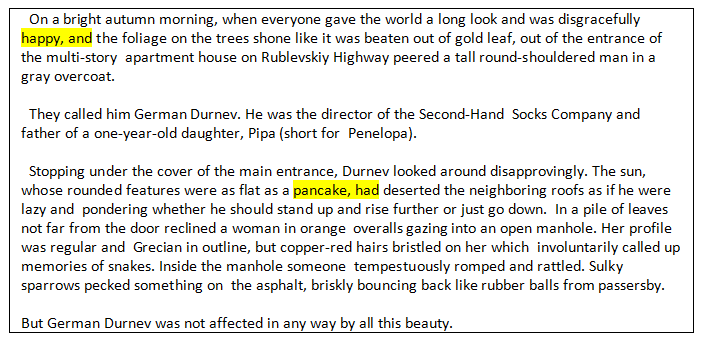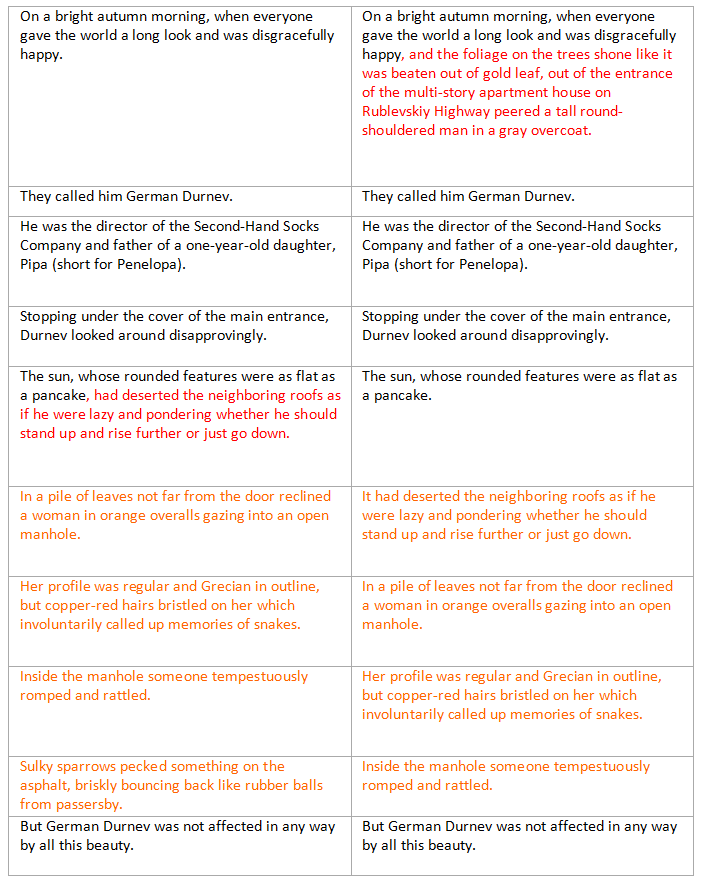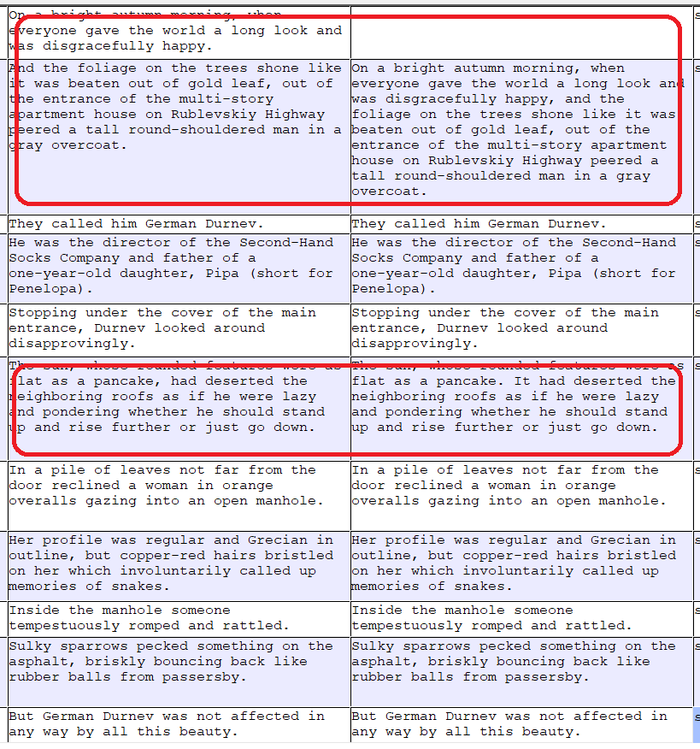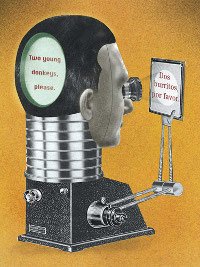| Pages in topic: [1 2] > | I have been asked to provide a memory - how do I do this? Thread poster: Ine Spee
|
|---|
Ine Spee
United Kingdom
English to Dutch
+ ...
I have finished a translation for a manual and have been asked to provide the "updated memory" with the completed translation.
I assume they are referring to a translation memory, or is this something? How would I go about getting this?
And specifically, can I get this after I have already translated a file? 😅
I simply translated the document manually in Word, so I haven't used a CAT tool or anything.
Is this something you can export when using a CAT ... See more I have finished a translation for a manual and have been asked to provide the "updated memory" with the completed translation.
I assume they are referring to a translation memory, or is this something? How would I go about getting this?
And specifically, can I get this after I have already translated a file? 😅
I simply translated the document manually in Word, so I haven't used a CAT tool or anything.
Is this something you can export when using a CAT tool like Smartcat/Phrase etc?
Or can I manually make one? If so, what exactly should be in it?
Sorry, I am not too familiar yet with these programs, so any advice would be appreciated. ▲ Collapse
| | | | Tom in London
United Kingdom
Local time: 20:34
Member (2008)
Italian to English
Because you did not use a CAT tool, there is no memory.
A memory file is something that can only be created by a CAT tool and there is no way that you could create one in any other way.
I suggest you politely tell them this.
| | | | neilmac
Spain
Local time: 21:34
Spanish to English
+ ...
Yes, they are asking for a TM (Translation Memory).
If they didn't stipulate before awarding you the job that delivering a TM would be necessary, I don't think you are under any obligation to do so. You could try explaining to them that you simply translated the text without any computer assisted tools (CAT).
However, if they insist, you could always run the text through CAT software and create a memory. I use WordFast Classic and I could do that relatively quickly.
| | | | Stepan Konev 
Russian Federation
Local time: 22:34
English to Russian
If your client did not request that you use a CAT tool before you accepted the job, it is not your problem then. If they did request you to use the tool, then you have to use it.
What you can do now is upload your source file into Smartcat or Phrase and paste your translation one segment after the other. Don't forget to confirm them with Ctrl+Enter. Once done, you would be able to export your TM as a TMX file and send it to your client.
[Edited at 2023-10-17 20:26 GMT]
| | |
|
|
|
Ine Spee wrote:
And specifically, can I get this after I have already translated a file? 😅
There is a process called "alignment" that creates a translation memory using the source file and the corresponding target file.
There is a free Aligner with smart features here: https://www.wordfast.net/?go=align
Just add the language codes in the corresponding boxes and and copy paste the contents of you files in the windows and click on "Upload", this will give you a TM after processing, based on your translation.
| | | | Lieven Malaise
Belgium
Local time: 21:34
Member (2020)
French to Dutch
+ ...
Philippe Locquet wrote:
There is a process called "alignment" that creates a translation memory using the source file and the corresponding target file.
Indeed. SDL Trados Studio also has an alignment feature.
| | | | Tom in London
United Kingdom
Local time: 20:34
Member (2008)
Italian to English
Philippe Locquet wrote: Ine Spee wrote:
And specifically, can I get this after I have already translated a file? 😅 There is a process called "alignment" that creates a translation memory using the source file and the corresponding target file. There is a free Aligner with smart features here: https://www.wordfast.net/?go=align Just add the language codes in the corresponding boxes and and copy paste the contents of you files in the windows and click on "Upload", this will give you a TM after processing, based on your translation.
Yes but this is additional unpaid work and time and there is no obligation on you to provide a memory file.
| | | | | LF Aligner or any other aligner | Oct 18, 2023 |
Ine Spee wrote: Or can I manually make one? If so, what exactly should be in it? Sorry, I am not too familiar yet with these programs, so any advice would be appreciated. 
I mostly use LF-Aligner to create TMX. I haven't found my example of simple use. I have an example on my web of batch processing 22 files into one TMX.
LF batch aligner version 2.42
https://www.condak.cz/nove/2015-09/06/cs/00.html
06.09.2015
--
Two years ago I tested BasicCAT-Aligner.
https://www.condak.cz/nove/2021-01/26/cs/00.html
26.01.2021
--
I wish you happy aligning and using translation memories for translations or MT models´ fine tuning.
Milan
| | |
|
|
|
Samuel Murray 
Netherlands
Local time: 21:34
Member (2006)
English to Afrikaans
+ ...
Ine Spee wrote:
I simply translated the document manually in Word, so I haven't used a CAT tool or anything.
With most CAT tools (including some online ones) you can export a translation memory after you have done the translation... in the CAT tool. Since you didn't use a CAT tool to do the translation, you can't export a translation memory, and you're just going to have to tell your client that.
There are tools called "aligners" that can take a source text and target text and align them into a translation memory.
Aligners are most useful for freelance translators to gain an advantage from old translations. You can do alignment for a client, but aligners typically do not preserve formatting information, which your client might be hoping for. The aligner might also segment the file differently from how your client's preferred CAT tool segments it, which would result in lower fuzzy matches for the client, which a client would dislike.
Alignment takes a lot of time, since you have to check very carefully that the right sentence is lined up with the right sentence. Some aligners are partially or fully automated, but you'd still have to check the alignment manually just to make sure the aligner guessed correctly which sentence to match up with which sentence.
LF Aligner is probably the most well-known freeware aligner. It is an automated aligner, but it does have a rudimentary editor for checking misalignments.
Stepan Konev wrote:
What you can do now is upload your source file into Smartcat or Phrase and paste your translation one segment after the other. ... Once done, you would be able to export your TM as a TMX file and send it to your client.
Using this method (which I do not recommend), she'll also have to apply formatting for each segment. )-:
[Edited at 2023-10-18 11:54 GMT]
| | | | Samuel Murray 
Netherlands
Local time: 21:34
Member (2006)
English to Afrikaans
+ ...
| Three examples of aligners | Oct 18, 2023 |
I took a small text and pasted it as both source and target, and then I made one change in the source and one change in the target, and then ran three aligners mentioned in this thread, to show what happens.
The original text:

I changed "happy, and" to "happy. And" in the source text, and I changed "pancake, had" to "pancake. It had" in the target text. In other words, I added a sentence in the source text and further down I added a sentence in the target text.
Wordfast Anywhere
Here is Wordfast Anywhere aligner's alignment result:

The red text is lost, and the orange text is misaligned.
From this test I deduce that the aligner resets itself at the start of every new paragraph (which is why the text starting from the second segment is correctly aligned again for a while, and why the last sentence is correctly aligned as well). It would seem that the Wordfast Anywhere aligner is quite a simple aligner: it splits each paragraph by sentence and then assumes that each sentence in the source and target text will just line up.
If you had used this aligner, you'd have to correct these alignment errors before delivering it to the client. The Wordfast Anywhere aligner does not have an interactive component, so it generates a number of files (CSV, TMX, etc.) which you then have to "fix" in another tool (e.g. Excel).
LF Aligner
Here is what LF Aligner does with the text (as viewed in LF Aligner's editor):

I marked the problematic segments in red blocks. The alignment is much more useful but it's still not perfect -- the user would have to manually merge the first two segments in the editor.
Trados Aligner
Since someone mentioned Trados' aligner, I'll add it here, too. This is what Trados does to the test files:

Trados correctly guessed how to deal with the two problem segments, and Trados opens the alignment in an alignment editor for the user to correct. However, I find Trados' aligner's controls very cumbersome (it involves a lot of mousework) and the two columns jump up and down independently quite a bit while editing, and I find the lines confusing to look at. Still, it's a relatively good aligner.
As I'm sure you're aware, though, Trados is quite expensive.
[Edited at 2023-10-18 12:11 GMT]
| | | | | Automatic feature in LF Aligner | Oct 18, 2023 |
Samuel Murray wrote: LF Aligner Here is what LF Aligner does with the text (as viewed in LF Aligner's editor):  I marked the problematic segments in red blocks. The alignment is much more useful but it's still not perfect -- the user would have to manually merge the first two segments in the editor.
The example of an alignment EN and EN text is not a good example. If you align EN-NL files, LF Aligner will create nl-en.dic for finding a EN-NL terminology and re-splitting segments.
On the bottom of a editor table are buttons for manual editing (+F5 for deleting of a row).
Milan
| | | | Ine Spee
United Kingdom
English to Dutch
+ ...
TOPIC STARTER
Thank you everyone for the advice and (extensive) feedback, I really appreciate it!
The agency had briefly mentioned translation memories, but there wasn't an emphasis on them (and I had never been asked to provide one before). I didn't use a CAT tool to translate the document, as it completely messed up the formatting of the document. I found it easier to translate it manually, as then I could change my translation slightly to fit in the available space.
It's good to ... See more Thank you everyone for the advice and (extensive) feedback, I really appreciate it!
The agency had briefly mentioned translation memories, but there wasn't an emphasis on them (and I had never been asked to provide one before). I didn't use a CAT tool to translate the document, as it completely messed up the formatting of the document. I found it easier to translate it manually, as then I could change my translation slightly to fit in the available space.
It's good to know that there are aligners out there, though! I will check some of these out, it might be useful for old translations as well. I sometimes use Phrase, and I think it might have an aligner as well, so I will have a look at that as well.
Regarding the TM, I have been asked to translate a similar file for the same client. So I will make sure to use the CAT tool for this translation and provide the client with the memory, which will cover most of the previous translation as well. ▲ Collapse
| | |
|
|
|
Samuel Murray wrote:
I took a small text and pasted it as both source and target, and then I made one change in the source and one change in the target, and then ran three aligners mentioned in this thread, to show what happens.
When you get a chance, could you do the same test with the aligner and wordfast.net, it's copy-paste based, I'm curious to see how it performs with your test setup.
https://www.wordfast.net/?go=align
| | | | Zea_Mays 
Italy
Local time: 21:34
Member (2009)
English to German
+ ...
actually _your_ property? To what extent agencies are entitled to ask for them?
| | | | Lieven Malaise
Belgium
Local time: 21:34
Member (2020)
French to Dutch
+ ...
Zea_Mays wrote:
actually _your_ property? To what extent agencies are entitled to ask for them?
They aren't, imo, unless they provide the translator with a CAT file with a memory attached to it.
| | | | | Pages in topic: [1 2] > | To report site rules violations or get help, contact a site moderator: You can also contact site staff by submitting a support request » I have been asked to provide a memory - how do I do this? | TM-Town | Manage your TMs and Terms ... and boost your translation business
Are you ready for something fresh in the industry? TM-Town is a unique new site for you -- the freelance translator -- to store, manage and share translation memories (TMs) and glossaries...and potentially meet new clients on the basis of your prior work.
More info » |
| | Trados Business Manager Lite | Create customer quotes and invoices from within Trados Studio
Trados Business Manager Lite helps to simplify and speed up some of the daily tasks, such as invoicing and reporting, associated with running your freelance translation business.
More info » |
|
| | | | X Sign in to your ProZ.com account... | | | | | |




























